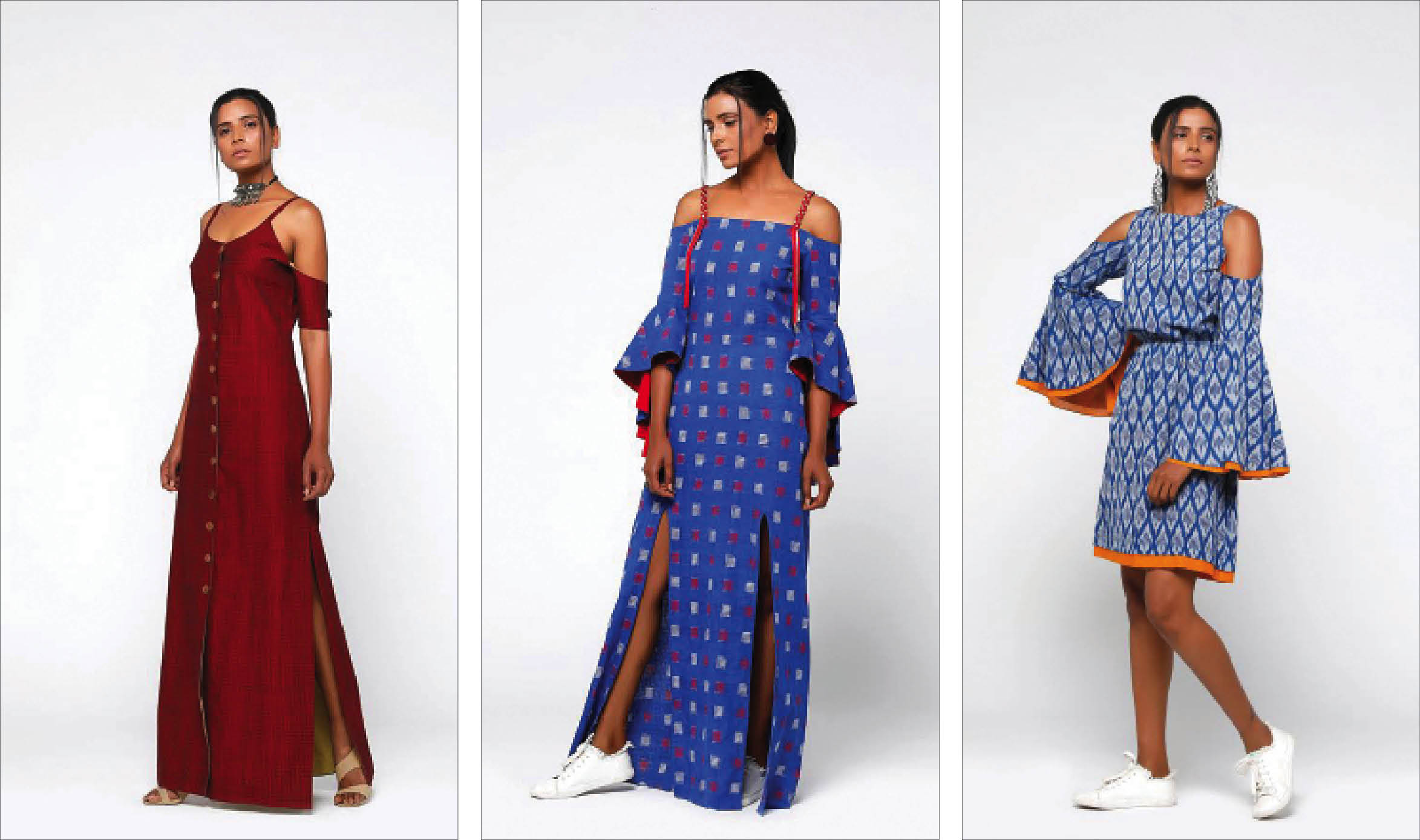Delhi-based designer Rinku Sobti, who has a label under her own name, started pursuing her passion for designing clothes two decades back. Starting her career with a London-based Indian designer, she later worked with an export house. And then eventually decided to have her own flagship store in New Delhi.
The brand today has marked its presence in the mainstream fashion industry. And Sobti as a designer has been attaining new heights ever since she came to the world of fashion. Her brand, which is known for creations like macramé and drapes, continuously experiments with contemporary fashion trends.
Sobti recently presented her collection, Global Age Ikat, at the Asian Designer Week 2017, which focused on hand-weaving fabric made by the craftsmen of Pochampally Park.
Speaking about her collection, Sobti told Guardian 20, “Global Age Ikat was all about hand-woven Pochampally fabric and a lot of time was devoted in its making. The idea behind this collection was to get our young generation familiar to our Indian crafts. The collection is complete western wear. The jumpsuits, dresses, tops, skirts and shorts are chic and comfortable. Since the collection was devoted to the young generation, we kept comfort as our top priority followed by what is in trend.”
In order to promote Indian handloom and the art of weaving, the designer thinks that modern technology infused in designs can help weavers and the handloom industry. Sobti said, “India has a wealth of weavers and being a designer and a part of an industry where I can promote and support them, I should try my best to do this. New technologies have been coming up every now and then and weavers should be introduced to new technologies so they can function in an easier and comfortable manner. They should be given training about how they can use the new technologies. Every now and then they should be made to attend talks where they are told about their strengths and their drawbacks; and how they can overcome the drawbacks so that the handloom industry should not remain a weak link in our sector.”
“Space is always created when one has a need for it. Indian handlooms require space to experiment with and this space would only be given when they are given the appropriate exposure.”
Talking about experimenting with handloom, she said, “Space is always created when one has a need for it. Indian handlooms require space to experiment with and this space would only be given when they are given the appropriate exposure.”
Nowadays many contemporary Indian designers are rediscovering traditional weaves and handicrafts. Further discussing about India’s fashion heritage, the designer said, “It is a good thing that designers are rediscovering our traditional weaves and handicrafts. We should further promote our Indian heritage so that it does not die out or vanish in the coming years. India has a vast fashion heritage and we should bring it up rather than copying what’s happening in the West.”
Fashion is all about innovation and creativity. The industry is coming up with new trends in the market. When asked about her take on the spirit of innovation and creativity in the Indian fashion market, Sobti said, “Innovations are always welcome—be it in fashion or any other sector. Fashion is one industry where we have to be creative and innovative with our ideas. Without these two necessities, we cannot function. People are always hunting for something new and something, which nobody has seen in the market, so we have to be on our toes every season. Fashion requires us to be different. I see it as a ground of experiments and innovations. Even now fashion has a complete different definition as compared to the definition it was in the past. I am sure five years from now fashion will have its new definition.”
Coming back to the trends in the industry, popular styles follow a cyclic pattern. She explained how a designer can make the designs more alluring than the older versions. The designer said, “Fashion trend is our soul in the industry. We need to be up for everything that is going on as fashion trends. To make it more appealing than the older version, we should try experiment with the trends in itself. Like what is in vogue now, we should try our hands more than what the trends says. Try to fuse things which are appealing to the eyes.”

Sobti also talked about how new designers are rehashing old styles than introducing new ones. The designer said, “No, I do not believe they are into rehashing old styles. Like I said earlier, they are trying their hands in every segment of the fashion industry and they have a clear-cut view of what they want. The young generation is full of energy and are more into trying new things every season.”
Further adding on why men’s wear segment still remains untapped while we have a number of designers in the industry, she said, “Yes, that is true that menswear is one area where designers hesitate to enter. Although, the new generation of designers is trying to enter this segment and give a chance to men to experiment with their wardrobe.”
The designer, who is now busy working on her latest collection, said, “I am working in Varanasi on chevron designs for the new collection. I am working closely with the Varanasi weavers from last couple of years, so this collection is purely handloom. We are going to combine pathani borders and chevron weavers—all developed in Varanasi.”
Like every other designer, Sobti has her own fashion statement. She concludes, “My fashion statement is you can only be confident when you are comfortable; and you are comfortable only when you know what are you wearing.”

